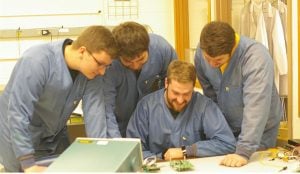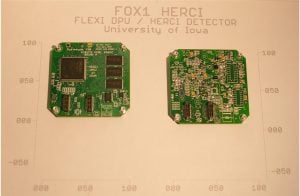AMSAT and University of Iowa Partner on Scientific Payload for Fox-1D
AMSAT and the University of Iowa have agreed to include the University’s
HERCI (High Energy Radiation CubeSat Instrument) radiation mapping
experiment on Fox-1D. According to Don Kirchner, KDØL, Research Engineer at
the University of Iowa, “HERCI is intended to provide a mapping of radiation
in a low earth orbit. This is of scientific interest for planning CubeSat
test flights for low energy X-Ray detectors.”
“The instrument consists of a digital processing unit (DPU) derived from
processors currently in orbit around Saturn on Cassini and on the way to
Jupiter on the Juno spacecraft,” says Kirchner. “The DPU was shrunk to a CubeSat
form factor with funding from the Iowa Space Grant Consortium.”
The University of Iowa’s history in spaceflight research dates back to the
earliest satellites. As Kirchner puts it, “HERCI can be considered a direct
descendent of the first University of Iowa spaceflight instrument flown on
Explorer I in 1958. The instrument is being constructed as a Senior Design
Project by four Electrical Engineering students from the UI College of
Engineering, under supervision of Space Physics engineering staff from the
Department of Physics and Astronomy.”
AMSAT’s VP of Engineering, Jerry Buxton, NØJY, noted the win-win benefits of
the agreement, stating, “This partnership with the University of Iowa
illustrates our strategy of leveraging the new CubeSat design to assist
universities that need a way to fly scientific payloads while providing a
viable ongoing platform for amateur radio.”


Photos courtesy of William Robison, KC0JFQ.
